Homeowner’s Guide to Avert Plumbing Catastrophes: Tips and Tricks
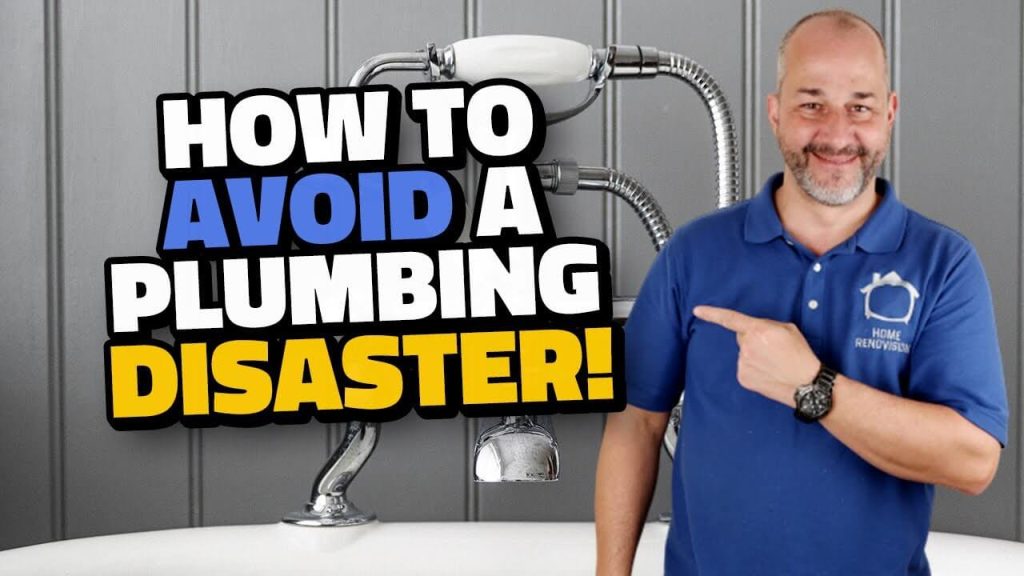
Owning a home is a significant investment, and one of your primary responsibilities is maintaining its various systems, including plumbing. A plumbing catastrophe can lead to extensive damage, costly repairs, and disruptions to your daily life. However, with a proactive approach and a good understanding of plumbing basics, you can avert these disasters and keep your home’s plumbing in excellent condition. In this comprehensive guide, we’ll provide you with valuable tips and tricks to help you become a savvy homeowner when it comes to your plumbing.
Table of Contents:
- Understanding Your Plumbing System
- Regular Maintenance: Your First Line of Defense
- Detecting and Addressing Leaks Early
- Preventing Clogged Drains
- Protecting Your Pipes in Cold Weather
- Upkeep of Plumbing Fixtures
- Dealing with Emergencies
- When to Call a Professional Plumber
- Sustainable Plumbing Practices
1. Understanding Your Plumbing System
When it comes to maintaining your home’s plumbing system and averting potential disasters, knowledge is your most potent tool. Understanding your plumbing system is the first step to becoming a savvy homeowner who can identify issues, make informed decisions, and, when necessary, take the right actions. In this section, we delve into the importance of comprehending the intricacies of your plumbing, including your pipes, fixtures, and the layout of your system.
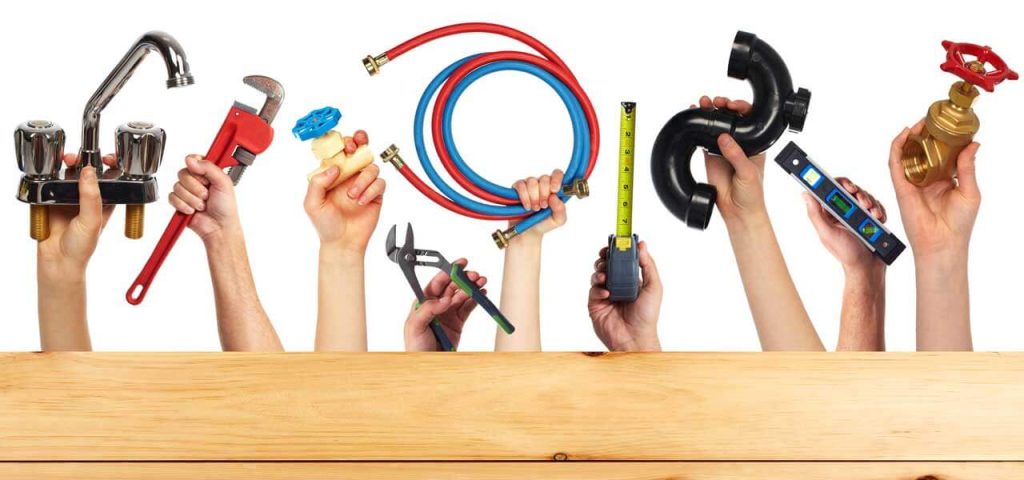
1.1. The Anatomy of Your Plumbing System
A typical residential plumbing system is a network of pipes, fixtures, and appliances that work together to provide essential services like water supply and waste disposal. Let’s break down the main components:
- Water Supply: Your plumbing system delivers fresh water to various parts of your home, such as faucets, showers, toilets, and appliances. This water originates from either a municipal water supply or a well.
- Drainage: The drainage system carries wastewater and sewage away from your home and into the municipal sewer or a septic tank. It’s crucial for maintaining hygiene and preventing contamination.
- Pipes: Pipes are the arteries of your plumbing system. They come in various materials, including copper, PVC, and PEX. The type and condition of your pipes play a significant role in the overall health of your plumbing.
- Fixtures: Plumbing fixtures encompass everything from faucets and sinks to toilets and showers. These are the points of interaction where you access water and dispose of waste. Understanding how fixtures function and connect to the larger system is essential.
- Appliances: Appliances like water heaters and washing machines are integral to your plumbing system. They require maintenance and can impact your overall water usage and energy consumption.
1.2. The Layout of Your Plumbing System
The layout of your plumbing system can vary depending on the age and design of your home. Here are some key elements to consider:
- Main Shut-Off Valve: This valve controls the flow of water into your home. In emergencies, knowing how to locate and operate it is crucial. It’s often found in the basement, crawl space, or near the water meter.
- Supply Lines: These pipes distribute water from the main shut-off valve to various parts of your home. It’s beneficial to know the routes they take, especially if you’re planning renovations or need to locate a hidden leak.
- Fixture Placement: Understanding where fixtures and appliances are located helps you trace the flow of water and pinpoint issues. It also assists with renovations and repairs.
- Drainage Paths: Knowledge of your drainage paths ensures you’re aware of where waste and wastewater exit your home. It’s crucial to prevent blockages and leaks.
1.3. The Importance of Understanding Your Plumbing System
Understanding your plumbing system offers several distinct advantages for homeowners:
- Early Issue Detection: With knowledge of your system’s layout and components, you can quickly identify issues like leaks, clogs, and damaged pipes. Early detection allows for timely and cost-effective solutions.
- DIY Maintenance: Armed with information about your plumbing, you can confidently perform basic maintenance tasks, such as changing washers, flushing water heaters, and clearing minor clogs.
- Efficient Repairs: In case of a plumbing problem, you can explain the issue more effectively to a professional plumber, ensuring a faster and more accurate resolution.
- Renovation Planning: If you plan to renovate your home, understanding your plumbing system’s layout is crucial for making informed decisions about fixture placement and pipe rerouting.
- Emergency Preparedness: Knowledge of your main shut-off valve and the layout of your system enables you to act swiftly in the event of a major plumbing emergency, potentially preventing extensive damage.
Understanding your plumbing system is the foundation of effective home maintenance and disaster prevention. It empowers you to recognize and address issues promptly, maintain your plumbing system, and make informed decisions about renovations and repairs. By familiarizing yourself with the anatomy and layout of your plumbing, you become a proactive homeowner capable of safeguarding your home from plumbing catastrophes.
2. Regular Maintenance: Your First Line of Defense
Regular maintenance is the cornerstone of any well-functioning plumbing system, and it stands as your first line of defense against potential plumbing disasters. By incorporating a proactive and structured approach to maintenance, you can identify and address issues before they escalate, extend the lifespan of your plumbing components, and ensure a reliable and efficient system. In this section, we will explore the significance of regular maintenance and provide you with a comprehensive guide to maintaining your plumbing system.
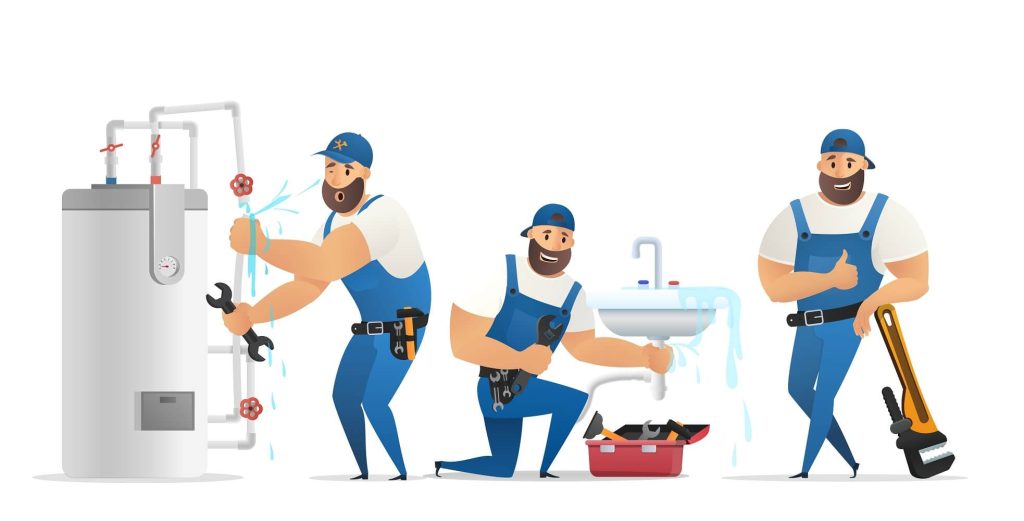
2.1. The Importance of Regular Maintenance
Regular maintenance is a preventative strategy that offers a host of advantages:
- Early Issue Detection: Consistent maintenance enables you to identify and address problems at an early stage, preventing minor issues from developing into major plumbing disasters.
- Cost Savings: By addressing minor problems proactively, you avoid costly repairs and replacements that may be necessary when issues are left unattended.
- Extended Lifespan: Regular maintenance can significantly extend the lifespan of your plumbing system components, including pipes, fixtures, and appliances.
- Optimal Efficiency: A well-maintained plumbing system operates more efficiently, leading to lower water and energy bills.
- Improved Home Value: A plumbing system in excellent condition enhances your home’s value, making it more appealing to potential buyers.
2.2. Developing a Plumbing Maintenance Schedule
To create an effective plumbing maintenance routine, consider the following elements:
- Frequent Visual Inspections: Regularly inspect visible plumbing components, such as faucets, sinks, and exposed pipes, for signs of leaks, corrosion, or damage. Quarterly checks are an excellent starting point.
- Annual Full Inspection: At least once a year, conduct a thorough inspection of your plumbing system. This includes examining hidden pipes, drainage paths, and fixtures. Look for evidence of leaks, rust, or other issues. Ensure your water heater, if present, receives an annual inspection as well.
- Scheduled Maintenance Tasks: Create a schedule for specific maintenance tasks, such as flushing your water heater, checking and cleaning aerators, and inspecting and cleaning your sump pump (if applicable). Ensure you stick to this schedule consistently.
2.3. Common Plumbing Maintenance Tasks
Here are some common plumbing maintenance tasks you can perform to keep your system in top condition:
- Inspect for Leaks: Regularly check for leaks around fixtures and in the pipes. If you notice dampness, discoloration, or mold growth, investigate the source of the leak and address it promptly.
- Test Water Pressure: High water pressure can strain your plumbing and lead to leaks. Test your water pressure with a gauge, and if it’s consistently above the recommended range, consider installing a pressure regulator.
- Drain Flushing: Periodically flush your drains with hot water to prevent the buildup of grease, soap scum, and debris. This simple task can prevent clogs from forming.
- Water Heater Care: Annually, drain your water heater to remove sediment buildup. Additionally, check the condition of the anode rod, which helps prevent tank corrosion. Replace the anode rod if it’s heavily corroded.
- Replacing Washers: Dripping faucets are a common issue. If you notice a faucet dripping, replace the washer or the faucet cartridge to stop the leak.
- Toilet Inspection: Periodically inspect the components in your toilet’s tank. Check for wear and tear on the flapper and other components. Replacing worn parts can prevent silent leaks and running toilets.
2.4. Record Keeping
Effective plumbing maintenance requires a degree of record-keeping. Keep a log of your maintenance activities, including inspection dates, tasks performed, and any issues encountered. This record can help you track the health of your plumbing system and ensure you don’t overlook any necessary tasks. It can also be valuable when discussing issues with professional plumbers.
Regular maintenance is your plumbing system’s first line of defense, and it plays a vital role in averting potential plumbing disasters. By staying proactive and consistent in your approach to maintenance, you can identify and address issues early, extend the lifespan of your plumbing components, and ensure your system operates efficiently. With a well-maintained plumbing system, you’ll enjoy cost savings, improved home value, and peace of mind knowing that your plumbing is in excellent condition. Remember that early detection and prompt action are your allies in preventing plumbing catastrophes.
3. Detecting and Addressing Leaks Early
In the realm of home plumbing, few issues are as insidious and potentially destructive as leaks. They can start small, often unnoticed, and gradually escalate into significant problems, causing damage to your home, increasing water bills, and even posing health hazards. Detecting and addressing leaks early is a fundamental component of proactive plumbing maintenance, serving as a crucial defense against plumbing disasters. In this section, we will delve into the significance of early leak detection, exploring methods, and providing insights on how to address leaks promptly.
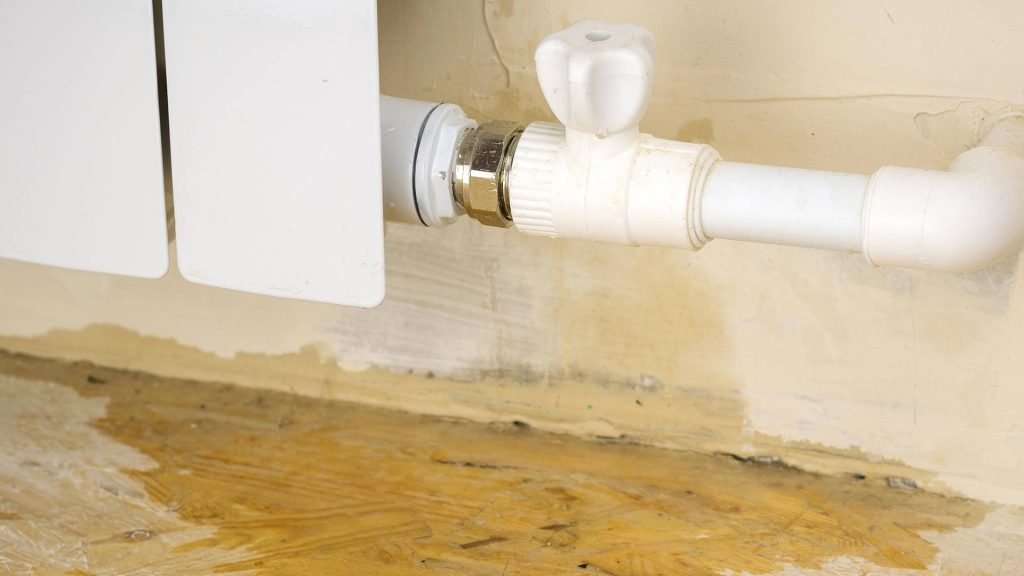
3.1. The Importance of Early Leak Detection
Early leak detection is paramount for several reasons:
- Damage Prevention: Early detection prevents leaks from causing extensive damage to your home’s structure, walls, ceilings, and floors. Swift action can save you from costly repairs.
- Water Conservation: Undetected leaks can result in substantial water wastage, contributing to higher water bills and environmental concerns. Detecting and fixing leaks promptly conserves this precious resource.
- Health and Safety: Some leaks can foster mold growth, which can be a health hazard. Addressing leaks early helps maintain a safe and healthy home environment.
- Cost Savings: Addressing minor leaks early on is far more cost-effective than dealing with major damage that can result from neglected leaks.
3.2. Methods for Detecting Leaks
To detect leaks early, you should employ a combination of visual inspections, monitoring utilities, and basic tools:
- Frequent Visual Inspections: Regularly inspect areas prone to leaks, such as beneath sinks, around toilets, and in the basement. Look for signs of dampness, discoloration, or warping.
- Monitor Water Bills: A sudden, unexplained increase in your water bills can be a strong indicator of an undetected leak. Keep an eye on your bills and investigate any unusual spikes.
- Dampness Detection: Be particularly vigilant if you notice dampness or water spots on walls, ceilings, or floors. This is a visible sign that you may have a leak.
- Use Food Coloring: To detect toilet leaks, add a few drops of food coloring to the tank. If the color appears in the bowl without flushing, you have a leak.
3.3. Addressing Leaks Early
Upon detecting a leak, it’s crucial to address it immediately. Here’s how:
- Isolate the Source: First, determine the source of the leak. If it’s from a faucet or fixture, shut off the water supply to that specific fixture. If you can’t isolate the source, turn off the main water supply to your home to prevent further damage.
- Fixtures and Faucets: For leaky faucets and fixtures, you can often address the issue by replacing washers, gaskets, or faucet cartridges. Most hardware stores offer replacement parts for common fixtures.
- Toilets: Leaky toilets are a frequent problem. Often, they can be fixed by replacing the flapper valve or adjusting the chain inside the tank. If you’re not comfortable with these tasks, a professional plumber can help.
- Pipes: If the leak is coming from a pipe, it may be due to corrosion, a loose connection, or a damaged section. You may need to tighten the connection, replace a damaged segment, or address corrosion issues. Depending on the complexity, this may require professional assistance.
- Professional Plumbers: If you’re unsure about the source of the leak or it’s beyond your DIY capabilities, it’s wise to consult a professional plumber. They have the expertise and tools to identify and repair leaks accurately.
- Water Damage Mitigation: In cases where a leak has caused water damage to your home, it’s essential to address not only the leak but also the aftermath. This might involve drying out affected areas, replacing damaged materials, and addressing any mold growth.
3.4. Preventive Measures
Preventing leaks in the first place is another key aspect of averting plumbing disasters. Consider these preventive measures:
- Regular Maintenance: As discussed in Section 2, regular plumbing maintenance can help identify and address issues before they lead to leaks.
- Drain Flushing: Periodically flushing your drains with hot water can prevent grease and debris buildup that can cause clogs and lead to leaks.
- Sealing Joints: Ensure that plumbing joints are adequately sealed with caulk or plumber’s tape to prevent water from seeping out.
- Proper Installation: When installing plumbing fixtures, appliances, or pipes, make sure they are properly sealed, connected, and secure to prevent future leaks.
Early detection and prompt action are your allies in preventing plumbing disasters caused by leaks. Being vigilant about visual inspections, monitoring your water bills, and using basic tools can help you detect leaks in their early stages. When you find a leak, it’s essential to isolate its source and address it immediately. Preventive measures, including regular maintenance and proper installation, are also crucial components of leak prevention. By staying proactive and informed, you can protect your home from the damaging effects of leaks and maintain a reliable and efficient plumbing system.
4. Preventing Clogged Drains
Clogged drains are a common and often frustrating plumbing issue that can lead to slow drainage, foul odors, and in severe cases, complete blockages. Preventing clogged drains is an essential part of proactive plumbing maintenance, as it can save you from inconvenience and costly repairs. In this section, we will delve into the significance of preventing clogged drains, explore common causes, and provide insights on how to keep your drains running smoothly.
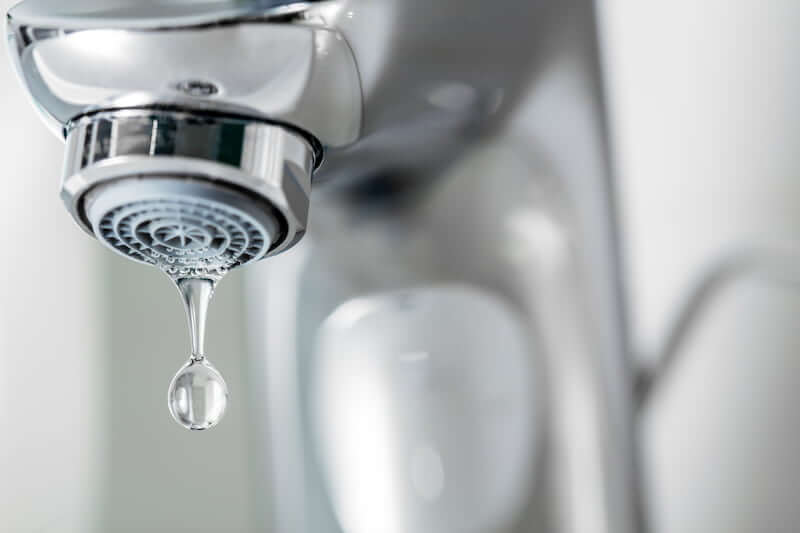
4.1. The Importance of Preventing Clogged Drains
Preventing clogged drains is crucial for several reasons:
- Efficiency: A clogged drain can slow water flow and hinder the efficiency of your plumbing system. Preventing clogs ensures smooth drainage.
- Avoiding Odors: Clogs can lead to stagnant water, causing unpleasant odors. Preventing clogs helps maintain a fresh and odor-free home.
- Cost Savings: When clogs become severe, they may require professional assistance and incur repair costs. Preventing clogs through regular maintenance can save you money.
- Convenience: Clogged drains can disrupt daily routines and tasks. Preventing them ensures a hassle-free living environment.
4.2. Common Causes of Clogged Drains
Understanding the common causes of clogged drains is the first step in preventing them. Here are some frequent culprits:
- Hair: Hair is a leading cause of clogs in bathroom drains, particularly in showers and sink drains.
- Soap Scum: Over time, soap can combine with minerals in water to form soap scum, which can accumulate in drains and lead to clogs.
- Food Particles: Kitchen sink clogs often result from the buildup of food particles and grease. These can adhere to the inside of pipes and create blockages.
- Foreign Objects: Children and pets sometimes drop small objects down drains, leading to clogs. These objects can include toys, jewelry, or even small utensils.
- Mineral Buildup: In areas with hard water, mineral deposits can accumulate in pipes and reduce their diameter, ultimately leading to clogs.
- Toilet Paper and Hygiene Products: Flushing excessive toilet paper or non-flushable items like hygiene products can cause toilet clogs.
4.3. Preventive Measures
Preventing clogged drains involves adopting proactive practices to mitigate the common causes. Here are several strategies to consider:
- Use Sink Strainers: Install sink strainers or drain screens to capture hair, food particles, and other debris before they enter your drains.
- Regular Drain Flushing: Periodically flush your drains with hot water to break down soap, grease, and mineral deposits. This simple maintenance task can prevent clogs from forming.
- Avoid Grease Disposal: Never pour grease down the kitchen sink. Instead, use a separate container for grease disposal. This helps prevent the buildup of grease inside your pipes.
- Hair Prevention: In bathrooms, use a drain screen or hair trap to catch hair before it enters the drain. This is particularly effective in showers and sink drains.
- Be Mindful of Toilet Use: Ensure that only toilet paper is flushed down the toilet. Discourage flushing hygiene products, cotton balls, and other non-flushable items.
- Regular Maintenance: Consistent plumbing maintenance, as discussed in Section 2, can help identify early signs of clogs and prevent them from escalating.
4.4. Addressing Minor Clogs
Despite your best preventive efforts, minor clogs can still occur. When you encounter a slow-draining sink or shower, address the issue promptly to prevent it from worsening. Consider using the following techniques:
- Plunging: A plunger can often clear minor clogs in sinks, showers, and tubs. Ensure there’s enough water in the fixture to create a seal, and use quick, forceful strokes with the plunger.
- Natural Remedies: Baking soda and vinegar can be used to break down minor clogs. Pour a cup of baking soda followed by a cup of vinegar down the drain, cover it, and wait for about 30 minutes. Then, flush with hot water.
- Manual Removal: For visible clogs close to the drain opening, you may be able to remove them manually. Ensure you wear gloves and use a tool like needle-nose pliers or a drain snake.
- Chemical Drain Cleaners: Use chemical drain cleaners as a last resort, as they can be harsh on pipes and the environment. Follow the manufacturer’s instructions and exercise caution.
Preventing clogged drains is an essential aspect of maintaining a functional plumbing system. By understanding the common causes of clogs and adopting preventive measures, you can ensure efficient drainage, avoid unpleasant odors, save money on repairs, and enjoy a more convenient living environment. Additionally, addressing minor clogs promptly using safe and effective methods can prevent clogs from escalating into severe blockages. Regular maintenance, vigilance, and mindful practices are your keys to keeping your drains running smoothly and your plumbing system in top-notch condition.
5. Protecting Your Pipes in Cold Weather
Cold weather can pose a significant threat to your plumbing system, especially in regions where temperatures drop significantly. Frozen pipes can lead to costly damage and inconvenience. Protecting your pipes in cold weather is a crucial aspect of proactive plumbing maintenance, ensuring that your system remains functional even during freezing conditions. In this section, we’ll explore why it’s vital to safeguard your pipes, common trouble spots, and practical measures to prevent freezing.
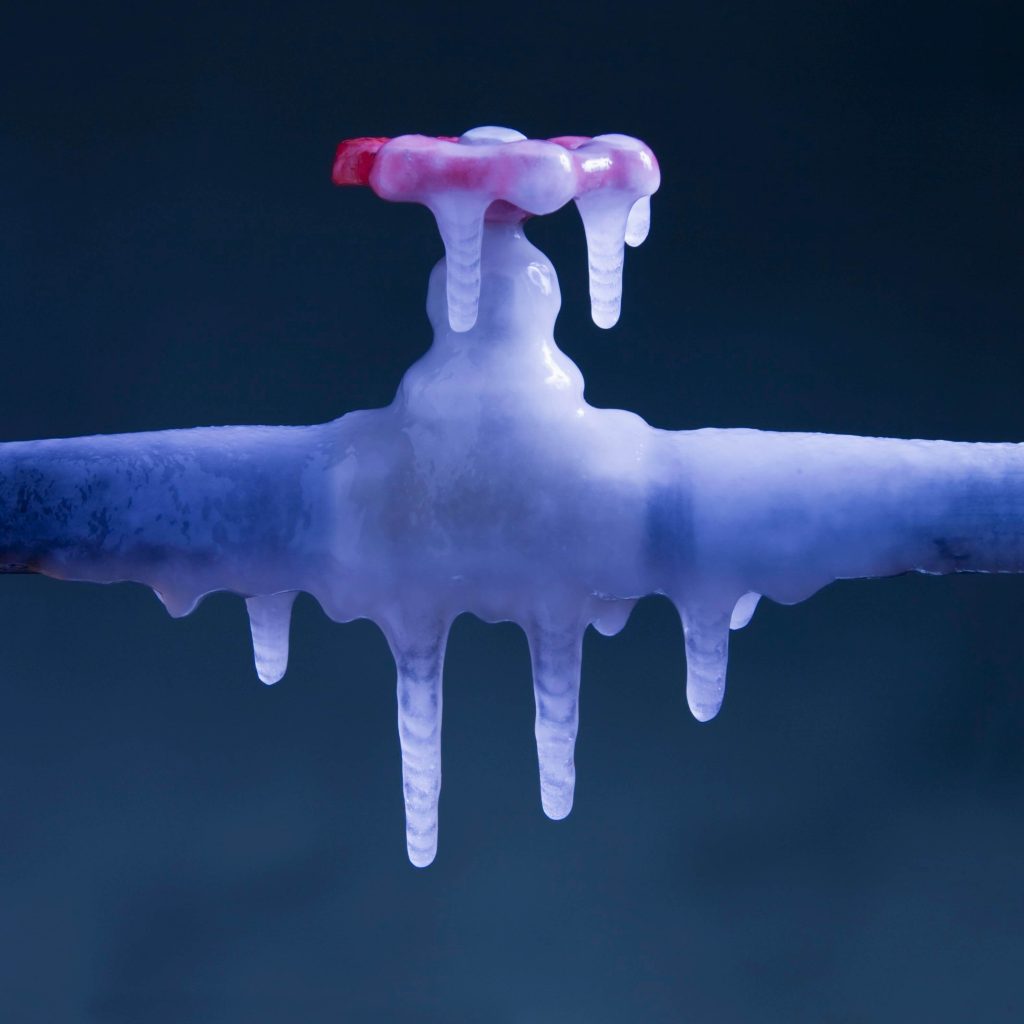
5.1. The Importance of Protecting Your Pipes in Cold Weather
Protecting your pipes from freezing temperatures is critical for several reasons:
- Preventing Burst Pipes: When water inside pipes freezes, it expands, leading to increased pressure. This can cause pipes to burst, leading to extensive water damage.
- Safeguarding Your Investment: Your plumbing system is a significant investment in your home. Protecting it ensures that you avoid costly repairs and replacements.
- Maintaining Daily Comfort: A functional plumbing system is essential for daily routines. Protecting your pipes ensures that you have access to water and avoid inconveniences during cold spells.
- Environmental Concerns: Leaking or burst pipes can lead to water wastage, which is not only costly but also detrimental to the environment.
5.2. Common Trouble Spots for Frozen Pipes
Certain areas and components of your plumbing system are more susceptible to freezing. These common trouble spots include:
- Exposed Pipes: Pipes located in unheated areas, such as crawl spaces, attics, and exterior walls, are at a higher risk of freezing.
- Outdoor Faucets: Exterior faucets are often vulnerable to freezing, especially if they’re not equipped with frost-free spigots.
- Swimming Pool Lines: Pool supply lines are at risk of freezing, as they may be overlooked during cold weather preparations.
- Water Supply Lines: The main water supply line entering your home can freeze if it’s not adequately insulated or protected.
5.3. Practical Measures to Prevent Freezing
To protect your pipes from freezing, consider implementing the following practical measures:
- Insulation: Insulate exposed pipes in unheated areas using pipe insulation or heat tape. This helps maintain a stable temperature and prevents freezing.
- Sealing Leaks: Inspect your home for drafts and seal any gaps or cracks that allow cold air to enter areas with pipes.
- Outdoor Faucets: Disconnect hoses and drain outdoor faucets before winter. Install frost-free spigots or faucet covers for added protection.
- Swimming Pool Lines: If you have a swimming pool, drain the supply lines and add antifreeze as recommended by the manufacturer.
- Main Water Supply Line: Insulate and protect the main water supply line entering your home. In extremely cold regions, consider burying the line below the frost line.
- Heat in Unheated Areas: In spaces like crawl spaces or attics, consider adding heat sources, like electric space heaters, to keep the temperature above freezing.
- Drip Faucets: On exceptionally cold nights, allow faucets to drip slowly. The movement of water can prevent freezing.
5.4. Dealing with Frozen Pipes
Despite your best efforts, pipes may still freeze on occasion. If this happens, follow these steps:
- Keep Faucets Open: Open both the hot and cold faucets associated with the frozen pipe to relieve pressure. Running water can help thaw the ice inside.
- Apply Heat: Use a heat source, such as a hair dryer, heat lamp, or electric heating pad, to warm the frozen section of the pipe. Start from the faucet end and work your way back.
- Thawing Wraps: You can also use commercial pipe-thawing wraps designed for this purpose.
- Professional Assistance: If you’re unable to thaw the pipe or if a pipe has burst, it’s crucial to contact a professional plumber for assistance.
Protecting your pipes in cold weather is an integral part of maintaining a reliable plumbing system. Frozen pipes can lead to burst pipes, costly repairs, and inconvenience. By understanding the importance of safeguarding your pipes and taking practical measures to prevent freezing, you can ensure that your plumbing system remains functional even during freezing temperatures. Regular insulation, draft sealing, and preventive maintenance are your allies in keeping your plumbing system in top-notch condition, no matter how cold the weather gets.
6. Upkeep of Plumbing Fixtures
Plumbing fixtures are integral to your home’s plumbing system. Regular maintenance and proper care of these fixtures are essential for ensuring their longevity, functionality, and overall performance. In this section, we will explore the importance of maintaining plumbing fixtures, common fixtures that require upkeep, and practical measures to keep them in optimal condition.
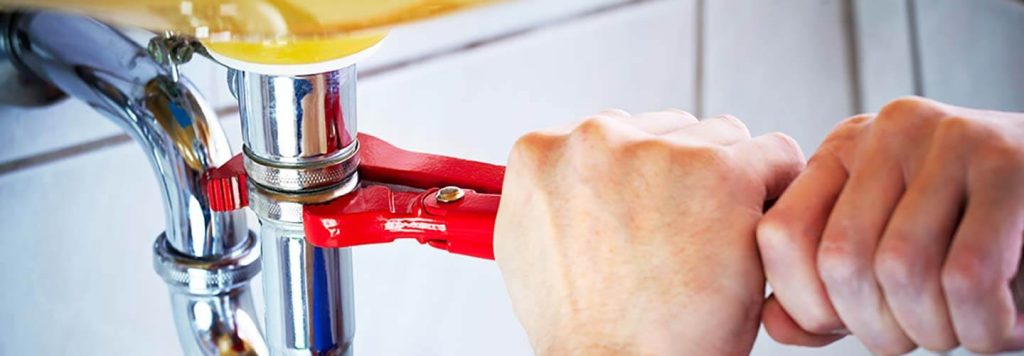
6.1. The Importance of Maintaining Plumbing Fixtures
Maintaining plumbing fixtures is vital for several reasons:
- Functionality: Well-maintained fixtures operate smoothly, allowing you to carry out daily routines without interruptions.
- Durability: Proper care and maintenance can significantly extend the lifespan of plumbing fixtures, reducing the need for replacements.
- Cost Savings: Preventive maintenance minimizes the risk of fixture breakdowns and costly repairs or replacements.
- Aesthetics: Clean and well-maintained fixtures enhance the overall appearance of your home, contributing to its value and aesthetics.
6.2. Common Fixtures Requiring Upkeep
Several plumbing fixtures within your home require regular maintenance:
- Faucets: Faucets in kitchens and bathrooms should be inspected for leaks, worn washers, and mineral buildup. Replacing washers and cleaning aerators can help maintain faucet performance.
- Toilets: Toilets often experience running or silent leaks, which can lead to water wastage and increased bills. Inspect toilet components in the tank and address any wear or damage. Ensure the flapper valve, fill valve, and flush handle are functioning correctly.
- Showerheads: Mineral deposits can clog showerhead nozzles, reducing water pressure. Remove and clean the showerhead regularly to ensure optimal water flow.
- Bathtubs: Check bathtub drains for hair and debris buildup, which can impede drainage. Remove the drain cover and clean out any obstructions.
- Sinks: Bathroom and kitchen sinks can experience clogs due to hair, soap scum, and food particles. Regularly flush drains with hot water and use sink strainers to catch debris.
- Garbage Disposals: Garbage disposals require routine maintenance to prevent clogs and odors. Running ice cubes through the disposal can help clean the blades, while citrus peels can neutralize odors.
- Dishwashers: Regularly inspect dishwasher seals and hoses for leaks and damage. Ensure that the dishwasher is securely attached to the countertop.
6.3. Practical Measures for Fixture Upkeep
To maintain your plumbing fixtures effectively, consider implementing these practical measures:
- Faucets: Address leaks and drips promptly by replacing washers or cartridges. Clean faucet aerators to remove mineral buildup, which can restrict water flow.
- Toilets: Test for silent leaks by adding a few drops of food coloring to the toilet tank. If the color appears in the bowl without flushing, there’s a leak. Address it by replacing worn-out components.
- Showerheads: Remove the showerhead and soak it in vinegar to dissolve mineral deposits. Clean or replace washers and seals if necessary.
- Bathtubs: Periodically remove the drain cover and clean out any debris. Use a drain snake if you encounter stubborn clogs.
- Sinks: Use sink strainers to catch debris and prevent it from entering the drain. Regularly flush drains with hot water to prevent buildup.
- Garbage Disposals: Run ice cubes through the disposal to clean the blades and maintain sharpness. Follow with cold water to flush away debris.
- Dishwashers: Inspect dishwasher seals and hoses for leaks. Ensure the dishwasher is level and securely attached to the countertop.
6.4. Preventive Maintenance Schedule
To streamline fixture upkeep, consider establishing a preventive maintenance schedule:
- Monthly: Inspect and address faucet leaks, running toilets, and clogged drains. Clean sink strainers.
- Quarterly: Clean and maintain showerheads, bathtubs, and garbage disposals. Run ice cubes through the disposal to keep it clean.
- Semi-Annually: Check for leaks and damage in dishwasher seals and hoses. Soak showerheads in vinegar to dissolve mineral deposits.
- Annually: Conduct a comprehensive inspection of all plumbing fixtures, including faucets, toilets, and sinks. Remove and clean drain covers.
Plumbing fixtures are essential components of your home’s plumbing system, and their proper upkeep is crucial for functionality, durability, and cost savings. By regularly inspecting and maintaining fixtures such as faucets, toilets, showers, bathtubs, sinks, garbage disposals, and dishwashers, you can prevent breakdowns and costly repairs, extend their lifespan, and enhance the overall appearance of your home. A well-maintained plumbing fixture not only performs optimally but also contributes to the aesthetics and value of your home. Implementing a preventive maintenance schedule ensures that your fixtures remain in excellent condition, enabling you to enjoy the benefits of a smoothly operating plumbing system.
7. Dealing with Emergencies
Despite your best efforts at proactive plumbing maintenance, emergencies can still arise. A sudden burst pipe, a major leak, or a malfunctioning water heater can create a plumbing crisis that requires immediate attention. Knowing how to deal with such emergencies is essential for mitigating damage, ensuring safety, and minimizing disruptions to your daily life. In this section, we’ll discuss the importance of being prepared for plumbing emergencies, common emergency situations, and steps to take when they occur.

7.1. The Importance of Being Prepared
Plumbing emergencies can have far-reaching consequences if not addressed promptly. Being prepared for these situations is crucial for several reasons:
- Damage Control: Quick action can prevent extensive water damage to your home’s structure, floors, walls, and belongings.
- Safety: Addressing emergencies promptly helps maintain a safe living environment by minimizing the risk of electrical hazards, slipping accidents, or mold growth.
- Cost Savings: Timely intervention often reduces the need for expensive repairs or replacements.
- Peace of Mind: Knowing how to respond to plumbing emergencies can provide peace of mind, even when unexpected problems occur.
7.2. Common Plumbing Emergencies
Plumbing emergencies can take various forms, but some are more common than others. Here are a few of the most typical emergency scenarios:
- Burst Pipes: Burst pipes can result from freezing, corrosion, or excessive pressure. They often cause significant water leakage and should be addressed immediately.
- Major Leaks: Major leaks can occur in various places, such as under sinks, behind toilets, or within walls. These leaks can lead to flooding and extensive damage.
- Water Heater Malfunctions: Water heater issues, including leaks or a lack of hot water, can disrupt daily routines and pose safety concerns.
- Sewage Backups: Sewage backups are unsanitary and can lead to health hazards. They often result from clogs or blockages in sewer lines.
- Clogged Drains: While not as urgent as some other emergencies, severe drain clogs can disrupt daily life and require immediate attention.
7.3. Steps to Take During a Plumbing Emergency
When a plumbing emergency occurs, it’s essential to take immediate action to mitigate the situation. Here are the steps to follow during a plumbing emergency:
- Shut Off the Water: Locate the main shut-off valve in your home and turn it clockwise to stop the water supply. This will prevent further water from entering the plumbing system and causing additional damage.
- Electrical Safety: Be cautious about electrical hazards, especially in flooding situations. Avoid standing in water while using electrical appliances and turn off the electricity at the breaker panel if necessary.
- Address Burst Pipes: If you have a burst pipe, use a pipe clamp, tape, or a temporary patch to stop the flow of water. This can provide a temporary solution until a plumber arrives.
- Contain Leaks: For major leaks, use buckets or towels to contain the water and minimize damage. Place a bucket under the leak and use towels to soak up any standing water.
- Contact a Professional: Call a licensed and experienced plumber to address the emergency. Provide a clear description of the situation and follow their instructions while waiting for their arrival.
- Evacuation: In severe emergencies, such as sewage backups or extensive flooding, it may be necessary to evacuate your home for safety reasons. Follow local authorities’ guidance and ensure the safety of your family.
7.4. Preventive Measures to Avoid Emergencies
While knowing how to respond to plumbing emergencies is crucial, it’s equally important to adopt preventive measures to minimize the likelihood of these situations. These measures include:
- Regular Maintenance: As discussed earlier in the guide, regular plumbing maintenance can identify and address issues before they escalate into emergencies.
- Winterization: Protect your plumbing system from cold weather by insulating pipes, draining outdoor faucets, and taking steps to prevent freezing.
- Clog Prevention: Use sink strainers, flush drains with hot water regularly, and be mindful of what you dispose of in toilets and sinks to prevent clogs.
- Sewer Line Inspection: Regularly inspect your sewer lines to identify any blockages or issues before they lead to backups.
- Water Heater Maintenance: Periodically flush your water heater and inspect it for leaks or signs of malfunction.
Dealing with plumbing emergencies is a critical skill for homeowners. Being prepared and knowing how to respond can help prevent extensive damage, ensure safety, and minimize disruptions to your daily life. While some emergencies may be temporarily mitigated, it’s essential to contact a professional plumber to address the root cause and provide a permanent solution. To reduce the likelihood of emergencies, adopt preventive measures, engage in regular maintenance, and be mindful of how you use your plumbing system. By staying informed and proactive, you can protect your home and maintain a reliable and efficient plumbing system.
8. When to Call a Professional Plumber
While proactive plumbing maintenance and DIY troubleshooting can address many common issues, there are situations where the expertise of a professional plumber is indispensable. Recognizing when to call a professional is vital for avoiding costly mistakes, ensuring safety, and addressing complex plumbing problems effectively. In this section, we will explore various scenarios that warrant a professional plumber’s involvement and provide guidance on making the right call.

8.1. The Importance of Professional Expertise
Professional plumbers possess extensive training, experience, and specialized tools that enable them to tackle a wide range of plumbing issues. Calling a professional plumber is important for several reasons:
- Complex Problems: Professional plumbers are equipped to handle complex and challenging plumbing issues, including those that require in-depth knowledge of the system.
- Safety: Plumbing systems can pose safety hazards, such as electrical risks, gas leaks, or contaminated water. Professional plumbers understand how to address these issues safely.
- Preventing Damage: Incorrect repairs or inadequate solutions can lead to further damage and costly repairs. Professional plumbers provide comprehensive and lasting solutions.
- Efficiency: Professionals can efficiently diagnose problems, which saves you time and ensures that your plumbing system is restored to optimal condition as quickly as possible.
8.2. Situations Requiring a Professional Plumber
There are several scenarios that clearly indicate the need for a professional plumber:
- Major Leaks: If you experience a significant water leak, especially one that is affecting your home’s structure or causing flooding, immediately call a professional plumber. They can identify the source and address it effectively.
- Burst Pipes: Burst pipes can result from freezing, corrosion, or excessive pressure. Professional plumbers can assess the extent of the damage and make necessary repairs.
- Sewer Line Issues: Sewer line problems, such as clogs, blockages, or tree root intrusion, are complex and can lead to sewage backups. Professional plumbers have the equipment and expertise to address these issues.
- Gas Line Leaks: Gas line leaks are highly dangerous and require immediate professional attention. Evacuate your home and contact both a plumber and your gas company.
- Water Heater Malfunctions: If your water heater is malfunctioning, producing strange noises, or leaking, it’s best to consult a professional plumber. Water heaters involve both plumbing and electrical components, which require specialized knowledge.
- Sump Pump Failure: Sump pumps are crucial for preventing basement flooding. If your sump pump fails, call a professional plumber to diagnose and repair the issue.
- Multiple Clogs: If multiple drains in your home are clogged simultaneously, it may indicate a more significant issue within the main sewer line. Professional plumbers can conduct thorough inspections and repairs.
8.3. When to Consult a Professional vs. DIY
While professional plumbers are essential for specific scenarios, it’s important to know when you can attempt DIY solutions and when to call for help. Here’s a guideline to help you decide:
- DIY Repairs: You can handle minor issues like leaky faucets, running toilets, or minor drain clogs with DIY repairs. These problems often have straightforward solutions and are accessible to most homeowners.
- Consult a Professional: If you’re unsure about a problem’s cause, the solution, or if you’ve attempted DIY fixes without success, it’s best to consult a professional plumber. They can prevent further complications and ensure the issue is resolved correctly.
8.4. Choosing the Right Professional Plumber
When selecting a professional plumber, consider the following factors:
- Licensing: Ensure the plumber is licensed and certified in your area. Licensing signifies the necessary training and competence.
- Experience: Look for a plumber with a proven track record and years of experience in the industry.
- References: Ask for references or read reviews from previous customers to gauge the plumber’s reputation and reliability.
- Estimates: Obtain estimates from multiple plumbers to compare prices and services. Ensure the estimates are detailed and include all necessary work.
- Emergency Services: Find a plumber who offers emergency services in case you face a plumbing crisis outside regular business hours.
Knowing when to call a professional plumber is a crucial aspect of responsible homeownership. While DIY maintenance and repairs can address many common issues, certain situations demand the expertise of a licensed plumber. Professional plumbers bring the necessary training, experience, and specialized equipment to handle complex plumbing problems, ensuring safety, efficiency, and long-lasting solutions. By recognizing the scenarios that warrant professional attention and choosing the right plumber for your needs, you can maintain a reliable and efficient plumbing system while safeguarding your home from costly damage and hazards.
9. Sustainable Plumbing Practices
In an era of increasing environmental awareness and a growing commitment to sustainability, practicing eco-friendly and sustainable plumbing is not only a responsible choice but also a smart one. Sustainable plumbing practices help conserve water, reduce energy consumption, and minimize the environmental impact of your plumbing system. In this section, we will explore the importance of sustainable plumbing, practical steps to make your plumbing system more environmentally friendly, and the benefits of adopting green plumbing practices.

9.1. The Importance of Sustainable Plumbing
Sustainable plumbing is significant for several reasons:
- Water Conservation: Sustainable plumbing helps conserve water, a precious resource, by reducing wastage and optimizing water use.
- Energy Efficiency: Water heating and distribution account for a significant portion of energy consumption in homes. Sustainable plumbing practices lower energy use and, consequently, utility bills.
- Reduced Environmental Impact: Sustainable plumbing minimizes the environmental impact of your plumbing system, including pollution, greenhouse gas emissions, and resource depletion.
- Long-Term Savings: Implementing sustainable plumbing practices can result in long-term savings on water and energy bills, making it cost-effective.
9.2. Practical Steps for Sustainable Plumbing
To make your plumbing system more sustainable, consider implementing these practical steps:
- Low-Flow Fixtures: Install low-flow faucets, showerheads, and toilets to reduce water consumption. These fixtures maintain water pressure while using significantly less water.
- Dual-Flush Toilets: Dual-flush toilets allow you to choose between a low-volume flush for liquid waste and a high-volume flush for solid waste, further reducing water usage.
- Water-Efficient Appliances: Invest in water-efficient appliances such as dishwashers and washing machines. Look for the ENERGY STAR label, which signifies water and energy efficiency.
- Insulation: Insulate hot water pipes to reduce heat loss, ensuring that hot water reaches faucets and showers more efficiently.
- Hot Water Recirculation Systems: Consider installing hot water recirculation systems to reduce the time it takes for hot water to reach fixtures, minimizing water wastage.
- Regular Maintenance: Maintain your plumbing system to prevent leaks and water wastage. Address leaks promptly to conserve water and avoid costly damage.
- Rainwater Harvesting: Collect rainwater for outdoor use, such as watering gardens and lawns. This reduces the demand on the municipal water supply.
- Greywater Systems: Implement greywater systems to recycle wastewater from sinks, showers, and washing machines for non-potable uses like irrigation.
- Solar Water Heaters: Solar water heaters use the sun’s energy to heat water, reducing reliance on electricity or gas for water heating.
- Tankless Water Heaters: Tankless water heaters heat water on-demand, eliminating the need for a storage tank and reducing energy consumption.
9.3. Benefits of Sustainable Plumbing Practices
Adopting sustainable plumbing practices offers numerous benefits:
- Water Savings: Low-flow fixtures and water-efficient appliances significantly reduce water consumption, conserving this valuable resource.
- Energy Savings: By minimizing the energy required for water heating and distribution, sustainable plumbing practices lower energy consumption and reduce utility bills.
- Cost-Effective: Sustainable plumbing practices often lead to long-term savings on water and energy bills, offsetting any initial investment.
- Reduced Environmental Impact: Sustainable plumbing contributes to lower greenhouse gas emissions, pollution, and resource depletion, reducing the environmental footprint of your plumbing system.
- Increased Property Value: Homes with sustainable plumbing features are often more attractive to environmentally conscious buyers and can command a higher resale value.
Embracing sustainable plumbing practices is not only environmentally responsible but also economically advantageous. By reducing water and energy consumption, minimizing environmental impact, and optimizing resource use, you can contribute to a more sustainable future while enjoying cost savings. Whether it’s installing low-flow fixtures, choosing water-efficient appliances, or investing in solar water heaters, there are numerous ways to make your plumbing system greener. Sustainable plumbing practices align with the global effort to address water and energy conservation, making them a significant part of responsible homeownership in the 21st century.
Conclusion
By following these tips and tricks, you can actively prevent plumbing catastrophes in your home. Regular maintenance, prompt leak detection, and knowing when to call a professional are the keys to ensuring your plumbing system remains in top-notch condition. By being a proactive and informed homeowner, you can keep your plumbing system running smoothly and your home protected from unexpected plumbing disasters.